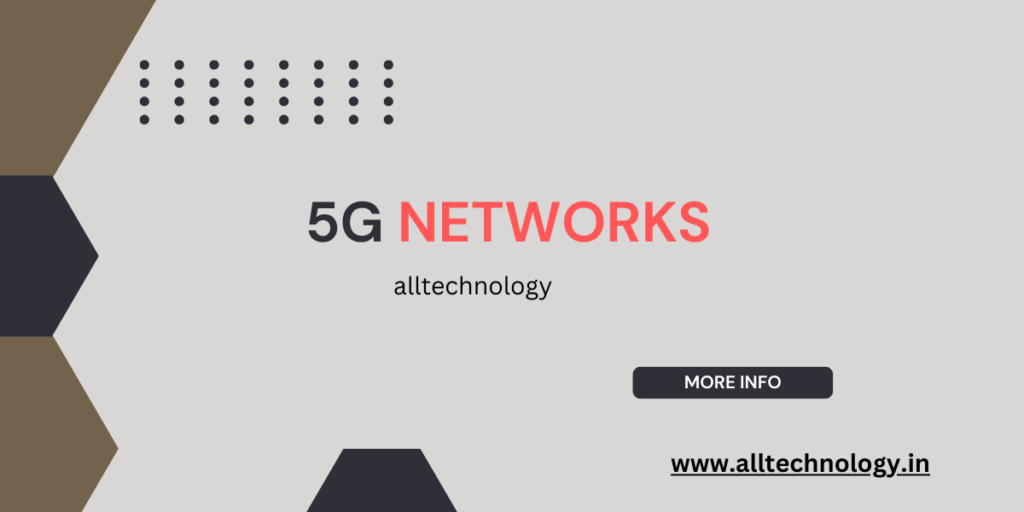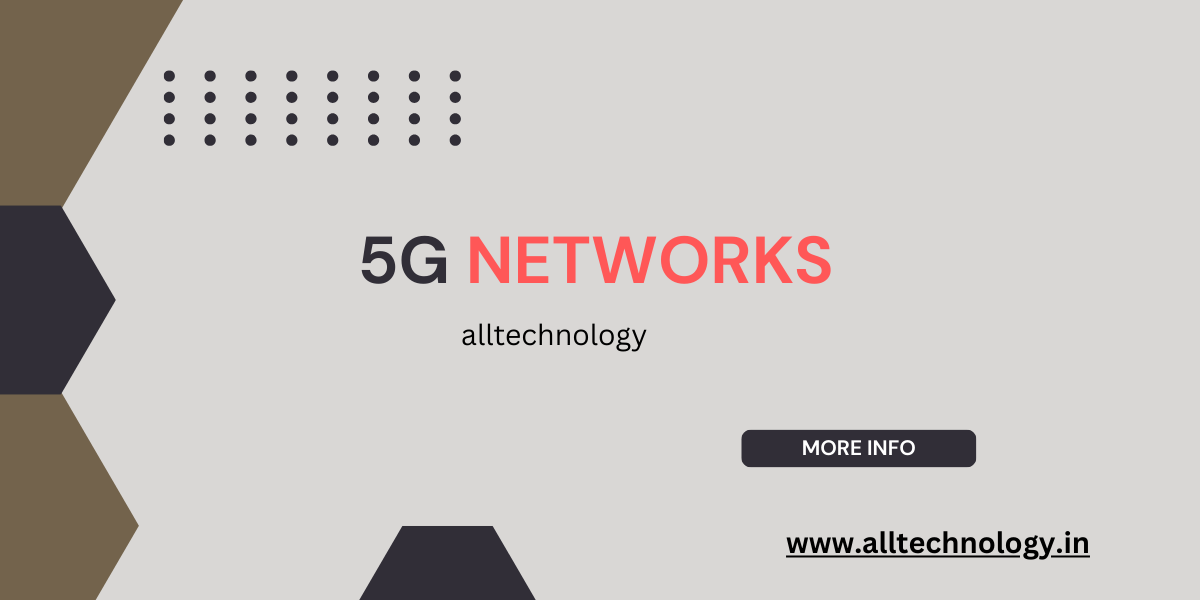Introduction
Hello Bloggers welcome alltechnology blog. In this blog you will learn How 5G Networks Will Change the Way We Use Technology. The advent of 5G networks marks a monumental leap in technological evolution, promising to revolutionize how we interact with the digital world. Unlike its predecessors, 5G is not just an incremental upgrade but a transformative advancement, poised to reshape various facets of our daily lives. By offering unprecedented speeds, ultra-low latency, and massive connectivity, 5G is set to unlock new potentials across multiple sectors.

Concepts
Speed and Efficiency
Imagine downloading a full-length high-definition movie in mere seconds. That’s the kind of speed 5G networks are bringing to the table. With peak data rates expected to reach up to 10 gigabits per second, 5G offers speeds that are 100 times faster than 4G. This blazing speed will facilitate seamless streaming, rapid file transfers, and more efficient cloud services. But it’s not just about speed; efficiency plays a crucial role. The network’s ability to handle more data with lower energy consumption means devices will have longer battery life and better performance.
Latency Reduction
Latency, the time it takes for data to travel from one point to another, is drastically reduced in 5G networks. We’re talking about latency as low as 1 millisecond. This near-instantaneous communication is critical for applications requiring real-time feedback, such as autonomous driving, remote surgery, and augmented reality experiences. Imagine a surgeon performing an operation from halfway around the world with no lag – that’s the promise of 5G.
Massive Connectivity
The Internet of Things (IoT) will thrive with 5G. Picture a world where billions of devices are interconnected, communicating seamlessly. From smart homes to intelligent cities, the ability to connect a massive number of devices without network congestion is a hallmark of 5G. This level of connectivity will lead to smarter energy grids, enhanced public safety systems, and more efficient transportation networks.
Enhanced Mobile Broadband
Enhanced Mobile Broadband (eMBB) is one of the key pillars of 5G. It ensures that mobile users experience high-speed internet access even in crowded areas like stadiums and concerts. The enhanced capacity will allow for more reliable video streaming, improved virtual meetings, and a better overall user experience.
Ultra-Reliable Low Latency Communications (URLLC)
URLLC is another game-changer brought by 5G. It provides the reliability and responsiveness needed for critical applications. Think about drones delivering medical supplies in disaster zones, or real-time control of robotic systems in manufacturing. The ultra-reliable low latency communications ensure these applications operate smoothly and safely.
Network Slicing
5G introduces the concept of network slicing, which allows for the creation of multiple virtual networks within a single physical 5G network. Each slice can be tailored to meet the specific requirements of different applications. For instance, a slice for autonomous vehicles would prioritize low latency and high reliability, while a slice for streaming services would focus on bandwidth. This flexibility ensures that diverse use cases can coexist efficiently on the same network infrastructure.
Impact on Industries
The implications of 5G extend far beyond consumer tech. In healthcare, for instance, telemedicine will become more effective, providing high-quality remote consultations and real-time health monitoring. In manufacturing, smart factories will leverage 5G for automation, predictive maintenance, and enhanced productivity. Even in agriculture, 5G can enable precision farming techniques, optimizing crop yields and resource usage.
Security and Privacy Considerations
With great power comes great responsibility. The increased connectivity and data throughput of 5G also bring heightened security and privacy concerns. Ensuring robust encryption, advanced authentication methods, and comprehensive security protocols will be paramount in protecting sensitive information and preventing cyber threats.
